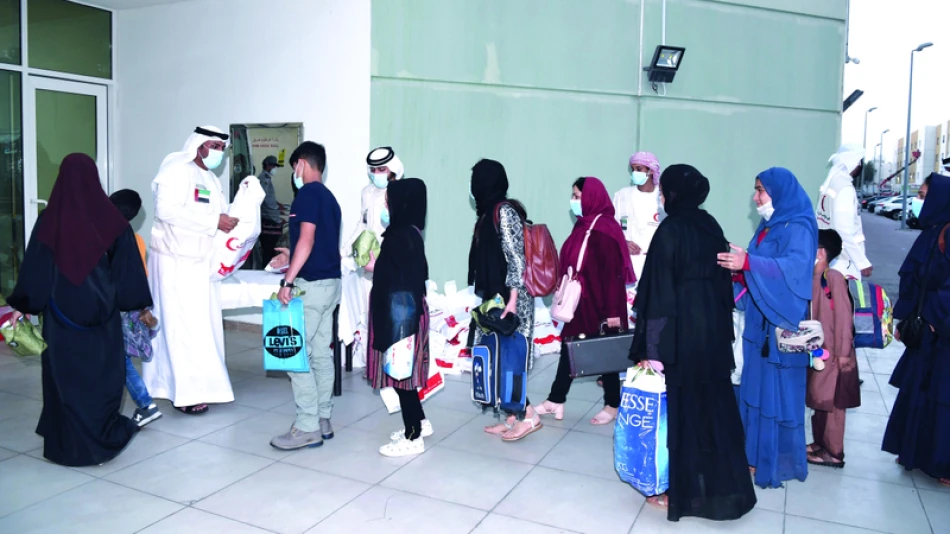
UAE Welcomed 17.6K Afghans Before Their Onward Travel to Final Destinations
UAE's $367 Million Afghan Evacuation Operation Sets New Standard for Humanitarian Response
The United Arab Emirates has concluded one of the most comprehensive civilian evacuation and resettlement operations in recent history, hosting 17,619 Afghan evacuees since August 2021 at a cost of $367 million. The operation, which facilitated the transit of over 41,000 people to 21 destination countries, demonstrates how Gulf states are positioning themselves as critical humanitarian hubs in an increasingly unstable world.
A Strategic Investment in Soft Power
The UAE's massive financial commitment—1.348 billion dirhams—represents far more than humanitarian goodwill. This operation positions the Emirates as an indispensable partner for Western allies managing complex geopolitical crises. By creating the "Emirates Humanitarian City" in Abu Dhabi, the UAE effectively became the primary staging ground for the largest civilian airlift since World War II.
The scale of services provided reveals the operation's sophistication: 34,923 COVID-19 vaccinations, over 254,572 medical services, care for 303 newborns, and educational support for nearly 4,500 Afghan children and adults. This level of comprehensive care suggests the UAE anticipated extended stays and planned accordingly.
Diplomatic Infrastructure as Competitive Advantage
Perhaps most telling was the UAE's decision to host 17 foreign embassy offices, a U.S. Immigration and Citizenship Services office, UN Migration Agency representatives, and U.S. Customs and Border Protection within the humanitarian city. This unprecedented concentration of diplomatic processing power transformed Abu Dhabi into a temporary international transit hub.
Lessons from Singapore's Model
The UAE's approach mirrors Singapore's strategy of becoming indispensable through logistical excellence, but applied to humanitarian crises rather than trade. Just as Singapore became the "Switzerland of Asia" through neutral facilitation, the UAE is positioning itself as the region's crisis management center.
Economic and Strategic Returns
While the $367 million price tag appears substantial, the strategic returns likely far exceed the investment. The operation strengthened ties with 21 destination countries, demonstrated UAE's operational capabilities to international partners, and showcased the country's ability to manage complex multinational operations under pressure.
For international businesses and investors, this operation provides concrete evidence of UAE's infrastructure resilience and government efficiency—factors increasingly important as companies seek stable regional headquarters amid global uncertainty.
Setting Regional Standards
The UAE's comprehensive approach contrasts sharply with traditional refugee camp models. By providing professional training to 2,589 Afghans and maintaining educational continuity for thousands of children, the Emirates ensured evacuees arrived in destination countries better prepared for integration.
Implications for Future Crisis Management
This operation establishes a new template for managing large-scale civilian evacuations. The UAE demonstrated that wealthy, strategically located nations can serve as sophisticated transit hubs, reducing the burden on destination countries while maintaining humanitarian standards.
The success of this model suggests the UAE will likely be called upon for similar operations in future crises, potentially creating a new revenue stream through international cost-sharing arrangements. More importantly, it positions the Emirates as an essential partner for any major power projecting influence in the region.
The Afghan evacuation operation represents a calculated investment in the UAE's long-term strategic positioning, transforming humanitarian necessity into diplomatic capital while establishing new standards for international crisis response.
 Sara Khaled
Sara Khaled







